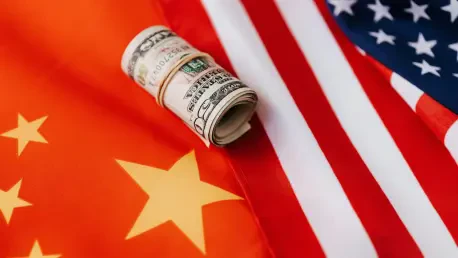In a striking move to protect domestic industries, the United States and the European Union have intensified their focus on Chinese chemical imports, imposing anti-dumping duties on key products vital to industrial applications. This strategic response targets allegations of dumping, where goods are sold below fair market value, undermining local producers in critical sectors like plastics, adhesives, and coatings. Chemicals such as 1,4-Butanediol, Adipic Acid, Epoxy Resins, and Methylene Diphenyl Diisocyanate (MDI) are under scrutiny, as both regions aim to address market distortions caused by unfairly priced imports. These measures reflect a broader push for fair trade and supply chain resilience, safeguarding jobs and economic stability. Yet, the ripple effects are significant, with businesses facing potential cost hikes and supply chain disruptions. Staying informed about these evolving trade policies is essential for companies navigating this complex landscape, as the impact on global markets continues to unfold.
Balancing Fair Trade and Market Challenges
The core objective behind the anti-dumping duties imposed by the US and EU is to level the playing field for domestic manufacturers who struggle against the competitive disadvantage posed by underpriced Chinese chemicals. Investigations into products like Adipic Acid and MDI reveal a pattern of pricing strategies believed to harm local industries, prompting authorities to consider duties that could range dramatically from 10% to 500%. While no final measures have been confirmed for certain chemicals as of mid-September, provisional duties are on the horizon, signaling potential cost increases for importers. This protective stance, though aimed at fostering fair competition, places a heavy burden on businesses reliant on these imports for production. The need to adapt sourcing strategies or invest in alternatives, such as bio-based substitutes, becomes pressing. Moreover, the geopolitical undercurrents driving these policies highlight tensions in global trade, where economic decisions often intersect with broader strategic goals, complicating the outlook for international commerce.
Navigating the Timeline and Future Implications
As the timeline of investigations progresses, companies must remain vigilant to mitigate risks tied to retroactive registrations and supply disruptions. For instance, the EU’s ongoing probe into 1,4-Butanediol suggests possible duties by early next year, while other chemicals face similar scrutiny with provisional measures anticipated soon. This dynamic environment underscores the urgency for businesses to monitor trade developments closely, as sudden policy shifts can alter cost structures overnight. Beyond immediate financial impacts, these anti-dumping actions signal a long-term shift toward prioritizing domestic production and supply chain independence in both the US and EU. Reflecting on the steps taken, authorities have demonstrated a commitment to protecting local economies, though challenges persist for importers caught in the crossfire. Moving forward, exploring innovative solutions and diversifying supply sources will be critical for industries to adapt, ensuring resilience amidst evolving trade barriers and fostering stability in a tense global market.









